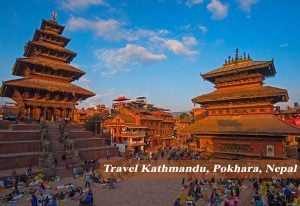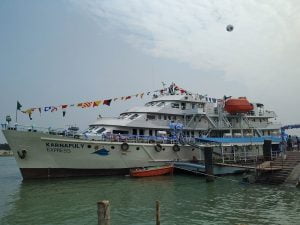Bangladesh has a rich history and abundant resources, owing to the reign of the Mughal Empire and the British East India Company. The Partition of Bengal and the country’s subsequent independence from Pakistan has left Bangladesh with a diverse and culturally rich heritage. As a result, Bangladesh is a nation that is awakening and rebellious. In this context, we have compiled a list of the top 10 historical places in Bangladesh.
The land of natural beauty is our evergreen Bangladesh. There are many places of interest in this country. People from all over the world come to see this beauty. We have even made a list of things to do in Dhaka City as well. Now, let’s find out about the country’s top 10 places of interest.
1. Lalbagh Fort:
The 17th-century Mughal fort, which stands by the Buriganga River, is one of the oldest architectural structures in Bangladesh. It was built by the then Mughal Subahdar Muhammad Azam Shah, son of Emperor Aurangzeb. It is believed that the construction of the fort was never completed.
The fort consists of 3 frameworks – (i) ‘Diwan-I-Aam’, which was the residence of the Governor, (ii) a mosque and (iii) the tomb of Bibi Pari, who was the daughter of Emperor Saista Khan.
Interestingly, there are some mysteries around this fort. There are tunnels underneath the fort which lead to the other side of the river. During the Sepoy Revolution of 1857, many soldiers tried to flee through those tunnels and died. Few British soldiers who followed them did not return. To investigate the situation, the researchers sent an elephant and a dog to those tunnels, but they didn’t return either. Soon after that horrific incident, the path was sealed.
- Do you know the history of Bangladesh? Let’s check it now.

2. Ahsan Manzil:
Initially, it was a vacation house for a Zamindar of Jamalpur district, Sheikh Enayet Ullah. After his death, his son sold this property to the French traders in 1740. They dug a pond in front of the building where fresh water could be fetched. After having a great business in the subcontinent for almost a century, they surrendered under the full British power and sold all their properties. So, in 1830, Khwaja Alimullah – an established man in Dhaka bought the property. He added a mosque in this compound. After his death, his son Khwaja Abdul Gani took a progressive look at the property and named it “Ahsan Manzil” after his son Ahsan Ullah.
1985, the Dhaka National Museum obtained this property and made it a museum after a long restoration process.
The Palace is divided into 2 sides. ‘Rangmahal’ is on the eastern side. It was the entertainment spot where foreign and local girls danced and sang for the principal owner, Enayet Ullah. The ballroom was also there at this time. The Western side has a living room, dining room, library, card room and guest rooms. The Building is front-faced by the mighty Buriganga River.
The architecture and the decoration epitomize the Mughal taste perfectly.

3. Panam City:
The city is in Sonargaon of Narayanganj, just beside the capital Dhaka. The ancient architecture of the Mughal period is found here. Baro-Bhuiyans used to rule here. It was within the capital at that time. As a capital, Sonargaon was enriched with architectural beauties. Numerous British Colonial monuments and forts are seen across this 20km area.
- Let’s read more about world heritage sites in Bangladesh.
It is one of the most visited tourist spots in Bangladesh.
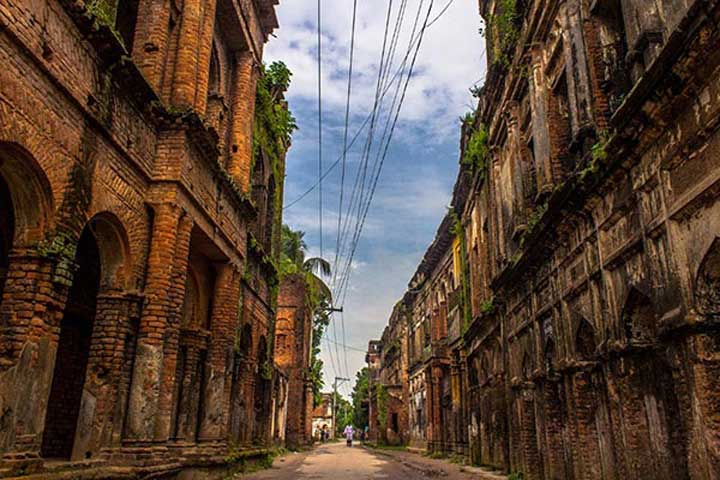
4. Mahansthangarh:
This place lies in a village in Bogra district called ‘Mahasthan.’ ‘Garh’ means fort, so ‘Mahasthangarh’ means fort of Mahasthan.
Francis Buchanan Hamilton, a Physician, first discovered this place in 1808. However, he made some significant contributions as a Geographer during his stay on the Indian subcontinent. It is the last remaining piece of the village ‘Pundranagara’ of that time. The village was alive until the 8th century AD.
This area is now preserved with a nice natural hilly look to enjoy leisure. People from everywhere come to spend some quiet time here with natural serenity.
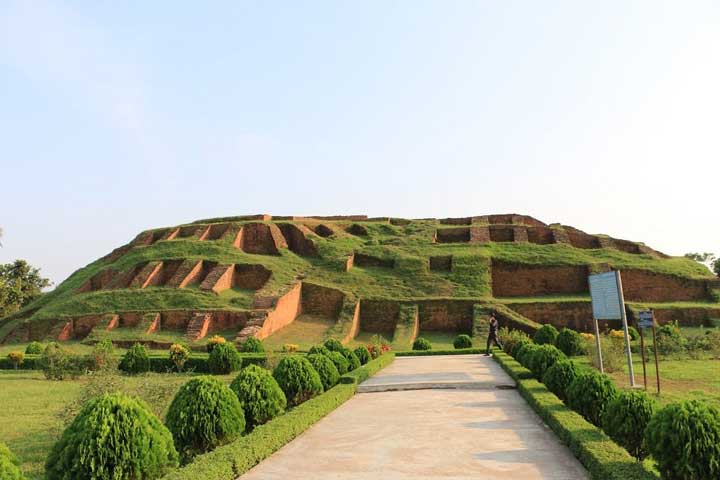
5. Shat Gambuj Mosque:
Shat Gambuj Masjid or the Sixty Dome Mosque, resides in the city of mosque, Bagerhat of Khulna division. It’s the largest mosque in Bangladesh and registered under the UNESCO World Heritage Site.
Before that, Saint General Khan Jahan Ali introduced a Muslim Colony in the middle of the 15th century and started building numerous mosques. Eventually, this mosque was started building in 1442 and completed by 1459.
A tower is there on each side, and 77 low domes surround those. There are also 60 stone pillars to support the roof. There is also a system for enough ventilation and light which gives a sound feeling.
- Check out the best hotels in Khulna city near Mangrove forest Sundarbans.
This mosque is considered the best archeological sign of the subcontinent of that time.
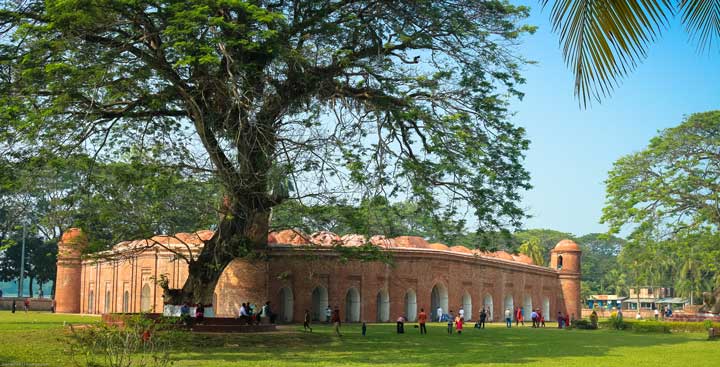
6. Liberation War Museum:
This museum is at Sher-E-Bangla Nagar, Dhaka. It is based on the liberation war and the independence of Bangladesh from Pakistan.
The committee under this authority collected the uniforms, clothes, weapons and documents from the liberation war. Also, some destroyed machines, aircraft and remains are there. Some historical letters and contracts are also found, such as Pakistan’s ‘surrender paper’.
Galleries, the main attraction of the museum, cover everything from prior to post-independence. The language movement, the killing of language martyrs, the Mass Uprising of 1969 and then eventually the genocide of the 25th March, which is labeled as a dark night in the history of Bangladesh. Pictures of the training of Mukti Bahini and then Mitro Bahini (Bangladesh-India joint force) are also found.

7. Mainamati:
It is the extinct Buddhist religious site in the district of Comilla. It serves a beautiful colonial cemetery as Comilla Cantonment is nearby. The Mainamati Cemetery is a historical memorial with about thousands of graves from the Second World War.
Mainamati was the name of a Chandra Queen, the mother of Govindachandra, who was a ruler of the Chandra dynasty. Between the 10th and 11th centuries, they ruled the Samatata division of Bengal. Currently, this is the part of Comilla, 114 km away from the capital, Dhaka. They used this place to perform their religious activities.
- See also the top 15 Islands In Bangladesh.

8. Star Mosque:
This mosque is based in Armanitola, Dhaka. A very antique mosque built by Mirza Golam Pir in the 19th century.
Built in Mughal style, initially, it was a simple rectangular mosque. The roof was crowned by 3 domes and covered with star-shaped china clay tiles. These tiles are also seen on the exterior.
Later, in the 20th century, a local businessman named Ali Jahan Bepari renovated the mosque. He started by adding a veranda. He repaired the tiles with mosaic. It was a popular decoration at that time. Along with the domes, the exterior and the interior are done with star-shaped tiles. That is why the mosque is called Star mosque. In 1987, the Ministry of Religious Affairs of Bangladesh added a new prayer hall, eventually leading to 2 additional domes in the mosque.
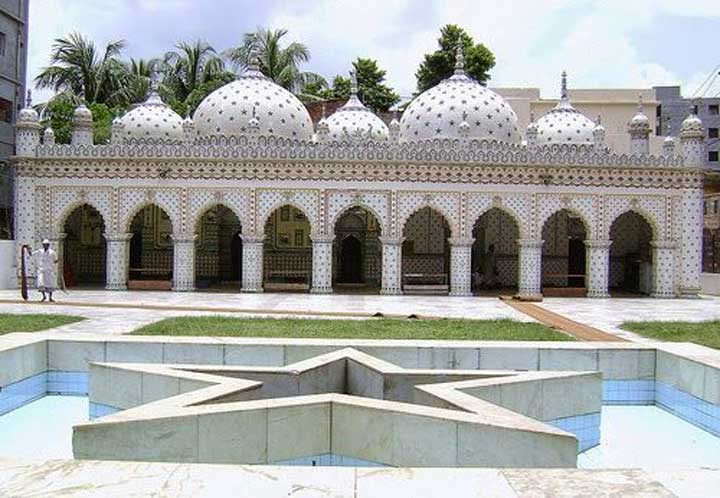
9. Shaheed Minar:
Shaheed Minar or The Martyr Monument, stands near Dhaka Medical College. It symbolizes remembering the language martyrs of the 1952 language movement.
In 1952, due to the greater number of Bangla speakers, people protested to make ‘Bangla’ the state language over Urdu. In response, Pakistani police openly fired at the protesters to disassemble their movement. Agonizingly, a few students at Dhaka University and Dhaka Medical College died.
Bangladesh sculptor Hamidur Rahman along with Novera Ahmed, designed and built the modern Shaheed Minar.
- Have you read about Dhaka Metro Rail, which has brought new hope to Dhaka city?
Eventually, February 21st, the day of the brutal incident, was declared International Mother Language Day. People remember these national heroes with flowers in front of Shaheed Minar on this day.
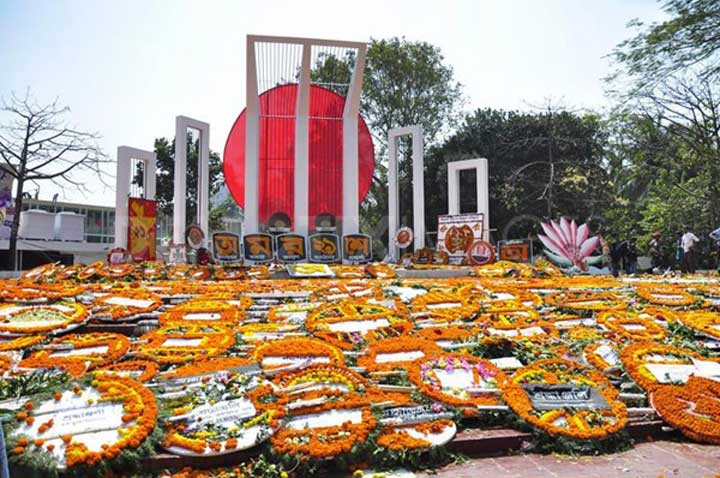
10. National Memorial:
One of the most beautiful places in Savar, near Dhaka, is the National Memorial. It was founded to recall the memory of the 7 major War Heroes of the Liberation War in 1971.
Bangladeshi Structural Engineer and Architect Syed Mainul Hossain designed this remarkable memorial. The monument consists of 7 different segments that stand proudly together to represent the 7 War Heroes.
Staggeringly, the complex has an area of 84 acres. National Parade, Scouting Display, Liberation War songs and related programs are displayed here annually on the victory day, 16th December. Besides, it’s a regular visiting spot for general people all of the time.
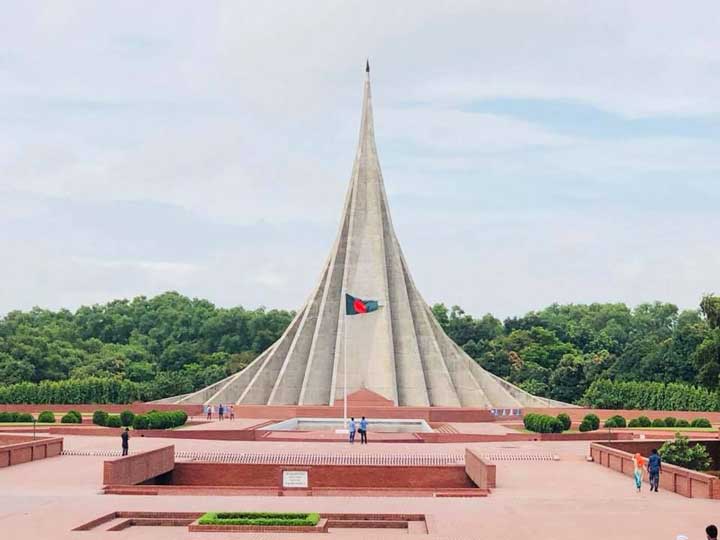
For now, it’s all about the top historical places in Bangladesh. If you have any suggestions, please inform us in the comment section. We are ready to make Bangladesh discoverable from anywhere in the world. Travel Mate Bangladesh arranges regular tours of different historical sites in Bangladesh. So, if you need support, contact our team. Thanks for staying with us. 🙂


